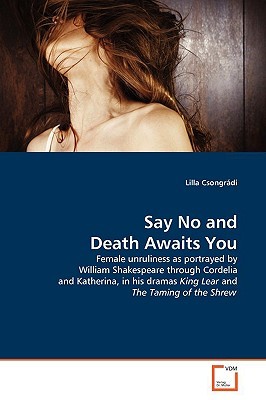
- We will send in 10–14 business days.
- Author: Lilla Csongrádi
- Publisher: VDM Verlag
- ISBN-10: 3639158598
- ISBN-13: 9783639158595
- Format: 15.2 x 22.9 x 0.4 cm, minkšti viršeliai
- Language: English
- SAVE -10% with code: EXTRA
Reviews
Description
Saying 'no' might be an ordinary thing for women nowadays, however, it did not use to be like that for women of renaissance times. The book describes female unruliness portrayed by Shakespeare through Katherina and Cordelia, two of the most prominent manifestations of rebellious women. The first two chapters deal with Cordelia's and Katherina's words and their consequences with regard to their fate. It is also examined whether and how the playwright embosses the renaissance woman through them. The final chapter contains more of the mythological background through the archetypal characters 'witch' and 'goddess'. Renaissance and medieval aspects of life are also compared. Moreover, the patriarchal system is examined as to its aspects regarding the barriers of manifestation to the playwright. The book should help shed some light on how the age restricted or freed the mind, and more precisely, how Shakespeare interwove this aspect into the dramas in question. It should also be especially useful to university students or anyone else who may be considering doing research into the field of the English literature of the Renaissance.
EXTRA 10 % discount with code: EXTRA
The promotion ends in 23d.22:14:35
The discount code is valid when purchasing from 10 €. Discounts do not stack.
- Author: Lilla Csongrádi
- Publisher: VDM Verlag
- ISBN-10: 3639158598
- ISBN-13: 9783639158595
- Format: 15.2 x 22.9 x 0.4 cm, minkšti viršeliai
- Language: English English
Saying 'no' might be an ordinary thing for women nowadays, however, it did not use to be like that for women of renaissance times. The book describes female unruliness portrayed by Shakespeare through Katherina and Cordelia, two of the most prominent manifestations of rebellious women. The first two chapters deal with Cordelia's and Katherina's words and their consequences with regard to their fate. It is also examined whether and how the playwright embosses the renaissance woman through them. The final chapter contains more of the mythological background through the archetypal characters 'witch' and 'goddess'. Renaissance and medieval aspects of life are also compared. Moreover, the patriarchal system is examined as to its aspects regarding the barriers of manifestation to the playwright. The book should help shed some light on how the age restricted or freed the mind, and more precisely, how Shakespeare interwove this aspect into the dramas in question. It should also be especially useful to university students or anyone else who may be considering doing research into the field of the English literature of the Renaissance.


Reviews